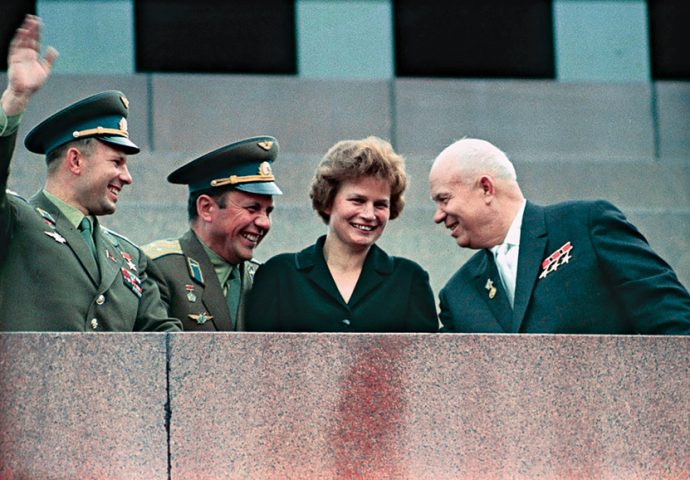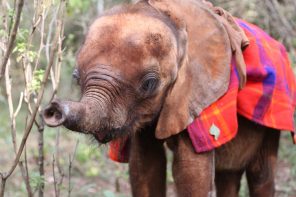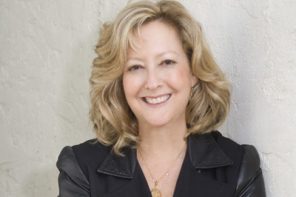When Hillary Clinton cracked the glass ceiling, becoming the first woman to be nominated for president of the United States, she joined the ranks of other pioneer women, including the first woman in space, Valentina Tereshkova.
While Tereshkova was orbiting Earth as pilot of the Russian space ship Vostok 6, a 10-year-old Russian friend of my daughters rushed into our apartment in Moscow — where my husband and I were living while covering the Soviet Union for The New York Times — with her exciting news of the birth of a new baby sister named Valentina in honor of the cosmonaut.
“All the baby girls in the hospital except one are being called Valentina,” she enthused.
This was more than a half-century ago, on June 16, 1963.
For millions of women in the Soviet Union and worldwide, Tereshkova, then aged 26, became a promise of the future.
Tereshkova was not only physically beautiful, but also a great athlete — a superb skier and expert skydiver who had made her first parachute jump at age 22. She had been selected for the Soviet space program from 400 applicants. Her training included weightless flights, rocket theory, 120 parachute jumps and pilot training in MiG jet fighters. She had been confirmed by Premier Nikita Khrushchev himself. Her call name was “Chaika,” meaning “seagull.”
For a generation and a half, since the Communist Revolution, Russian women had been torn between a drive for equality with men — a compulsion to prove their worth in building the glory of the state, and a desire to be feminine. “Valya,” as she was called in Russia, represented Soviet women as the Kremlin pictured them in an ideal Communist society, which was far from reality. She clipped her braids and wore her hair in a short fluffy “kitten cut” to show her femininity, but to Soviet propagandists it verified that Tereshkova’s space feat was proof of their ultra-modern society: “Soviet women are on an equal footing as men in work that calls for great courage, physical endurance and much knowledge.”
During the three days that Valentina was circling in outer space, small airplanes were flying over Moscow’s streets, dropping pamphlets proclaiming that Russia possessed the highest technology in the world and that Valentina, like Yuri Gagarin, the first man in space, had seen heaven but not found God. The pamphlets, printed in large black print, were picked up on the streets below by the women waiting in line to pay high prices for potatoes, cabbage, eggs, bread and carrots, which was the only food readily available. No fresh fruit, tomatoes or greens. I was one of those women standing in a queue with my four daughters, (ages 8, 6, 4 and 2), trying to survive in the Russian economy. The babushkas in line began to tear up the pamphlets, while others complained that they had been ordered to appear at another “spontaneous demonstration” for cosmonauts. When we returned to our high rise on Prospect Mira carrying a shopping bag full of cabbage, we trudged up to the eight floor. The usual sign hung on the rickety lift — Nyet rebotat. Not Working.
When I later brought a copy of The New York Times to show my friendly babushkas in the food line that John Glenn, the first American astronaut to orbit the Earth, said “I saw God,” they nodded and burst into applause. They knew it all the time. No number of high-tech space flights could change their basic beliefs or free the average woman in the Soviet Union from household drudgery as could a clothes dryer, dishwasher or diaper service, which were not available then.
Valentina’s father was a war hero, killed in the Finnish Winter War when she was 2 years old. In 1963, there were 10 million more women than men in a population of 219 million. The imbalance was due to drastic losses of young men during World War II. Lack of manpower resulted in womanpower being a potent factor in the Soviet scheme of things. Women began doing manual labor, building roads and bridges, but, like the rest of the world, were not predominant in political life.
Shortly after landing back on earth, Tereshkova married a fellow cosmonaut, Andriyan Nikolayev, at the Moscow Wedding Palace with Krushchev presiding. They had a daughter who became a doctor.
To this day Tereshkova is revered as a hero ranking with Gagarin in space history. She has won numerous awards, including The Order of Lenin. In 2011, she was elected to the State Duma, the lower house of the Russian legislature, where at the age of 79 she still serves. In 2014, she helped carry the Olympic flag at the opening ceremony of the Winter Games in Sochi.
A year earlier, she had volunteered to go on a one-way trip to Mars. She’s still reaching for the stars.




